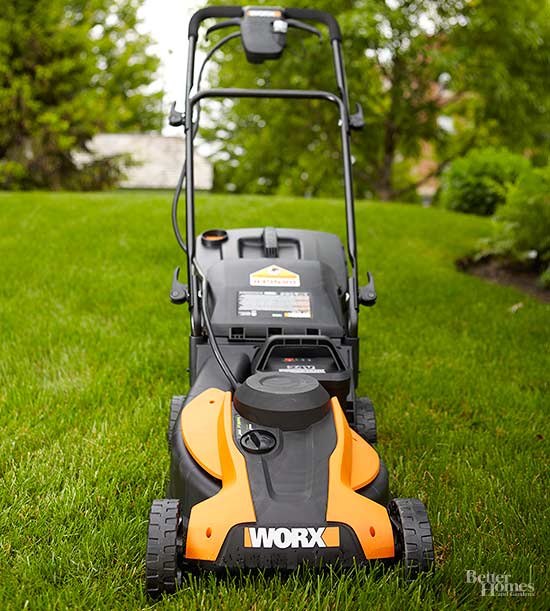






First, find the best lawn mower for your needs.
Keep your lawn mower blade high and mow frequently.
As a rule, never remove more than one-third of a blade of grass in a single mowing. If your grass has grown very tall, mow as high as you can, then gradually cut the grass lower. Grass clippings should be less than 1 inch long.
Never scalp the grass thinking that if you mow shorter, you can mow less frequently. Each blade of grass is part of a plant that gets its nutrients in part from photosynthesis from the sun. Mowing too low cuts the amount of leaf surface so the grasses may not be able to regenerate. Shorter lawn turf grasses also make it easier for weeds to move in and take over.
Lawns can be mowed a little lower in the spring and fall when the weather is cooler. In summer, keep the height taller so the blades can shade their roots and the extra leaf surface can provide more photosynthesis to fuel better roots.
Experts have raised their recommendations in recent years for mowing heights between 2 and 3.5 inches, depending on the type of grass. Cool-season grasses such as Kentucky bluegrass, tall fescue, and perennial ryegrass can generally be cut at 2.5 to 3.5 inches. Warm-season grasses that grow horizontally, such as zoysia and Bermuda can be mowed lower, 2 to 2.5 inches.
continue reading belowIf you remove grass clippings using a bagging mower, you rob your lawn of valuable nutrients. Grass blades are composed of 85 percent water and 5 percent nitrogen, so they break down rapidly and provide nutrients to the soil. Grass clippings can actually provide up to 30 percent of your lawn's fertilizer requirements.
Grass clippings do not cause thatch, a layer of partially decomposed grass roots and stems that can build up between the soil surface and the growing grass.
However, clippings can contribute to thatch that's more than ½ inch thick. If thatch is a problem, use power raking, verticutting, or core aeration in spring or fall to open up spaces for roots.
Keep grass clippings away from hard surfaces such as streets or driveways to prevent them from being swept into storm drains. Besides clogging drains, clippings can affect water quality. Grass clippings contain phosphorus, a nutrient that turns lakes green with algae. Chemically treated decomposed clippings can also pose a threat to fish and other wildlife.
If you have a bagging mower, you probably don't need a new one unless the old one is unsafe to operate without the bagging attachment. In most cases you can simply remove the attachment.
Copyright © www.100flowers.win Botanic Garden All Rights Reserved